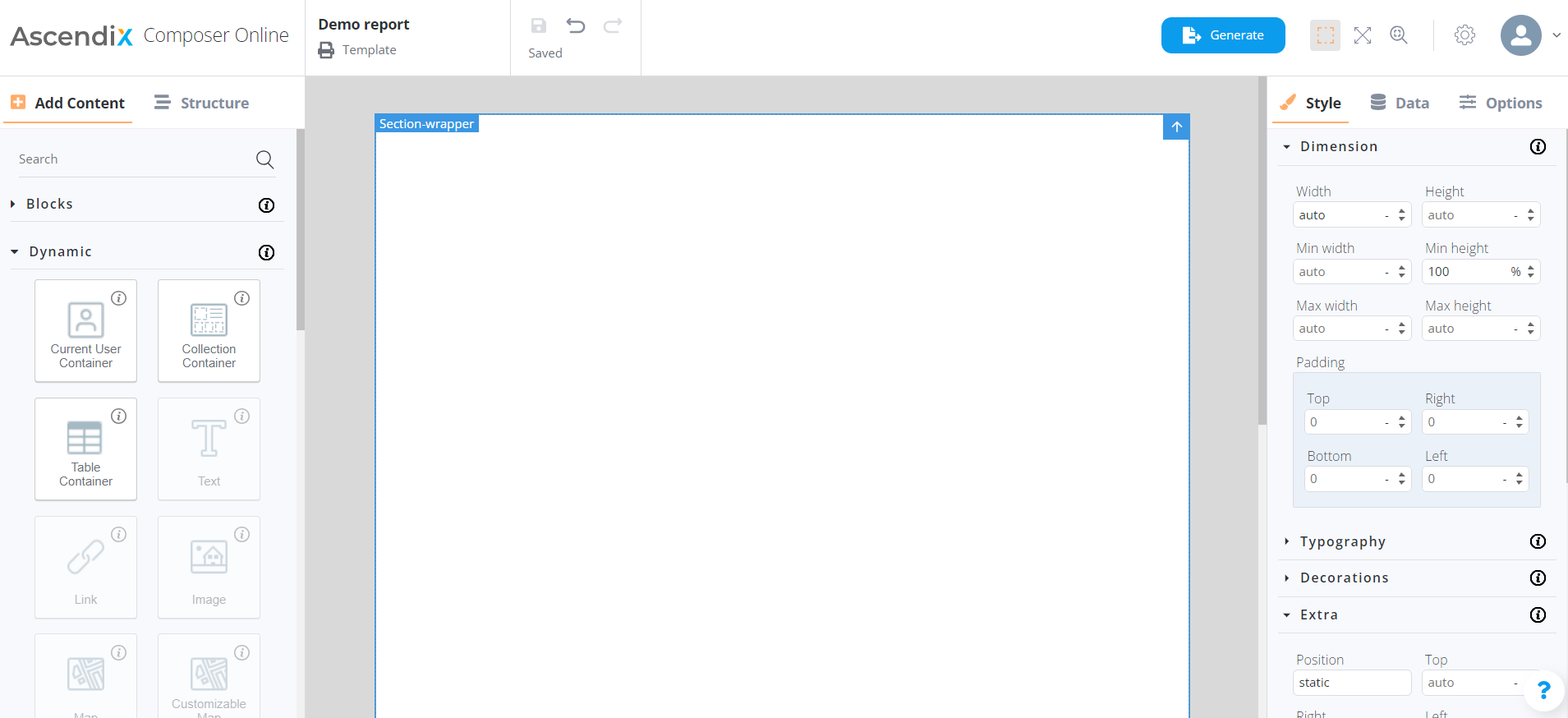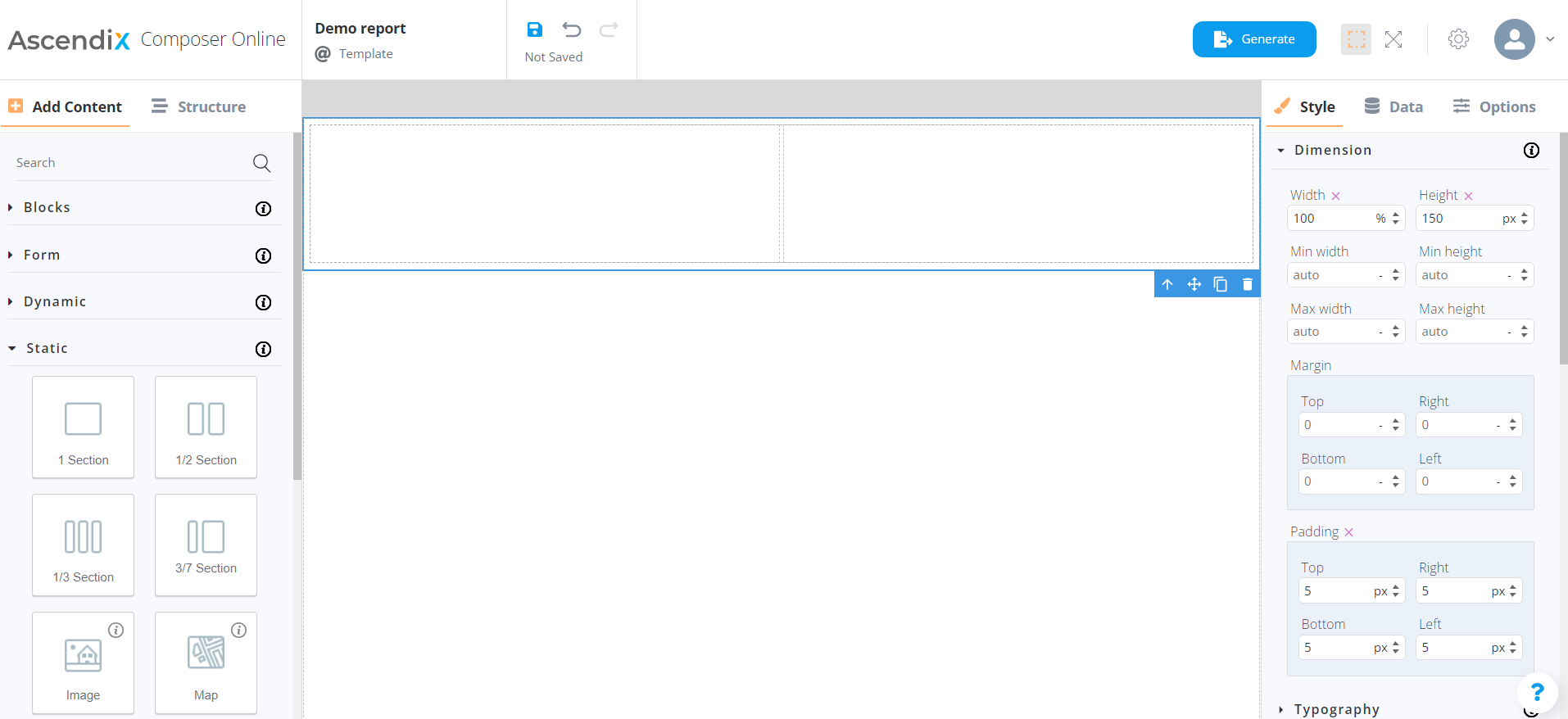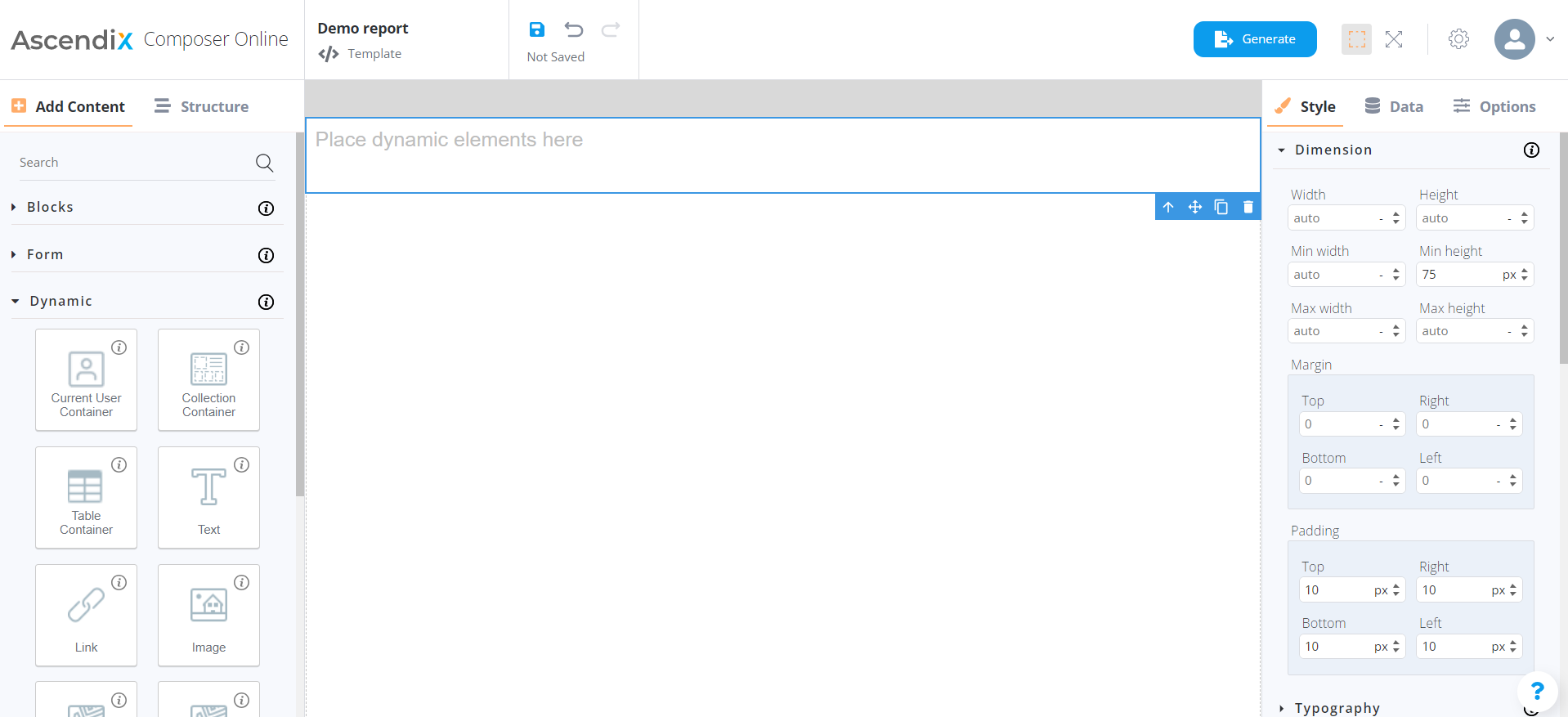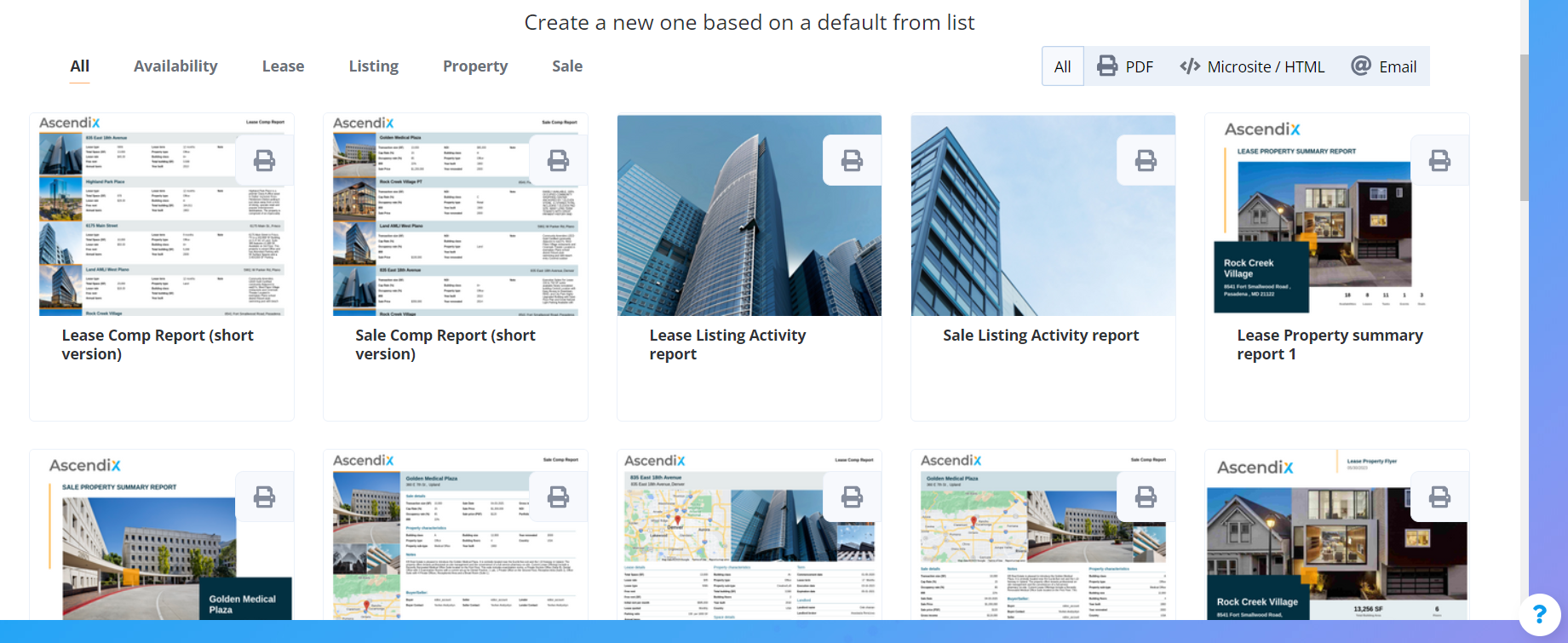Template types
There are 3 template categories in Composer Online grouped by type:
- Printable;
- Email;
- Microsite/HTML.
Every type has its own icon which identifies it among other templates in the grid view and in the editor: printer for printable (or PDF) templates, “at” symbol for email and “code” symbol for Microsite/HTML templates.
Printable templates

Templates for printing are utilized to create a forthcoming PDF document that can be utilized either online or for physical printing purposes. These templates offer customization options in the Template settings, allowing users to adjust page orientation (Portrait or Landscape) and page size (following American and European standards).
Printable templates are structured with sections, headers, and footers that can be assigned to the respective sections.
Publications created using printable templates serve as prototypes for future PDF files. The publication and the generated PDF share the same content, but the publication is editable. This intermediate step between the template and the PDF enables users to make any necessary modifications before producing the final PDF document.
Email templates

Email templates are utilized to create emails that will be included as content in future email newsletters. These templates have a cohesive structure without being divided into sections. They do not offer options for adjusting orientation or page size settings.
Both the template and the publication have a preview feature that allows users to send a test email and ensure that the content appears as intended.
Publications created using email templates are still HTML files that contain the necessary data from the source.
Microsite templates

Microsite templates are employed to create landing pages. These templates also possess a cohesive structure and facilitate the creation of one-page websites where data can be dynamically fetched.
Publications developed using the Microsite template are future web pages that comprise both dynamic and static content. These pages typically include forms to collect lead data and present offers to potential customers.
Templates’ menus have similar options despite the template type but Publications’ menus vary. All of the Publication types can be viewed, edited, and deleted, and the link to the report can be copied), however, some differences exist:
- Only Printable publications can be downloaded as PDFs;
- Only Microsite publications can be uploaded to the FTP server or downloaded as a ZIP archive.
- Email and Printable publications can be exported as HTML.
Template categories
In Composer Online, there are 3 categories of templates grouped by their origin: Private, Published, and Default.
Private templates

These templates are created by clicking the "New template" button in the navigation bar. Whether starting from scratch or using the default template, the result is a template accessible to the account owner and users with the "Manager" role within their organization.
Published templates

These templates have been published within the organization. This privilege is exclusive to users with the "Manager" role. Published templates are initially created privately by Managers and then made visible to other members of the organization. While Managers can edit these templates, Editors cannot. Editors must duplicate the published template to their own account, essentially creating a "private" template based on the published one, which they can then manage.
Default templates

These templates are predefined ones available to all users within the organization. Similar to published templates, default templates cannot be edited directly and must be duplicated to the user's account by clicking the "Choose" button. This rule applies to users of any role. Creating copies in the user's account enables customization of the default template without affecting the prototype in the template library. The duplicates appear as private templates in the Template tab and in the template dropdown in the ACX Search.